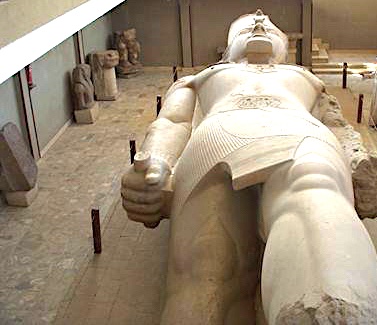Located at the entrance of the Nile delta, 20km south of Cairo, Memphis was the first capital of the unified kingdom of Upper and Lower Egypts.
According to the historian, Herodotus, Memphis was founded around 3100 BC by Menes, a pharaoh of the first dynasty of ancient Egypt.In Ancient Egypt, Memphis was also known as Ankh Tawy ("That which binds the Two Lands").
The name Memphis, however, is a Greek translation of the Egyptian name Men-nefer, a nearby pyramid built in the 6th Dynasty.
During its 300 years of history, Memphis was an important administrative and religious centre, located strategically on a narrow part of the Valley, which enabled traffic control and the ability to resist invasions.
The Temple of Ptah (god of craftsman and architects) also turned Memphis into an important religious centre. And it was also the place where the Pharaohs were crowned.
Memphis was abandoned by the 7th century CE and the remains of temples and other buildings were used in the construction of the city of Cairo.In the Bible, Memphis is called Moph or Noph.
Later Memphis was known as Inbu-Hedj, meaning "White Walls", as the city was built of mud bricks which were painted white and would gleam in the sunlight.
Interestingly, many of the pyramids near Cairo were built in the period when Memphis was the most important city in Egypt and possibly the world.
In 2240 BCE, Thebes, the city of Luxor today, replaced Memphis as the capital city.
In 2240 BCE, Thebes, the city of Luxor today, replaced Memphis as the capital city.
A 3,200-year-old statue of Ramesses II was discovered in 1820 at the Great Temple of Ptah near Memphis. It is made from red granite and weighs 83 tons.
The open-air museum of Memphis displays artefacts from the ancient ruins, including statues and an enormous colossus of Ramses II.
 |
| A colossal statue of Ramesses II,in the Open-Air Museum at Memphis, Egypt. |
 |
| Memphis Open Air Museum, Egypt |
 |
| Memphis Open Air Museum, Egypt |



